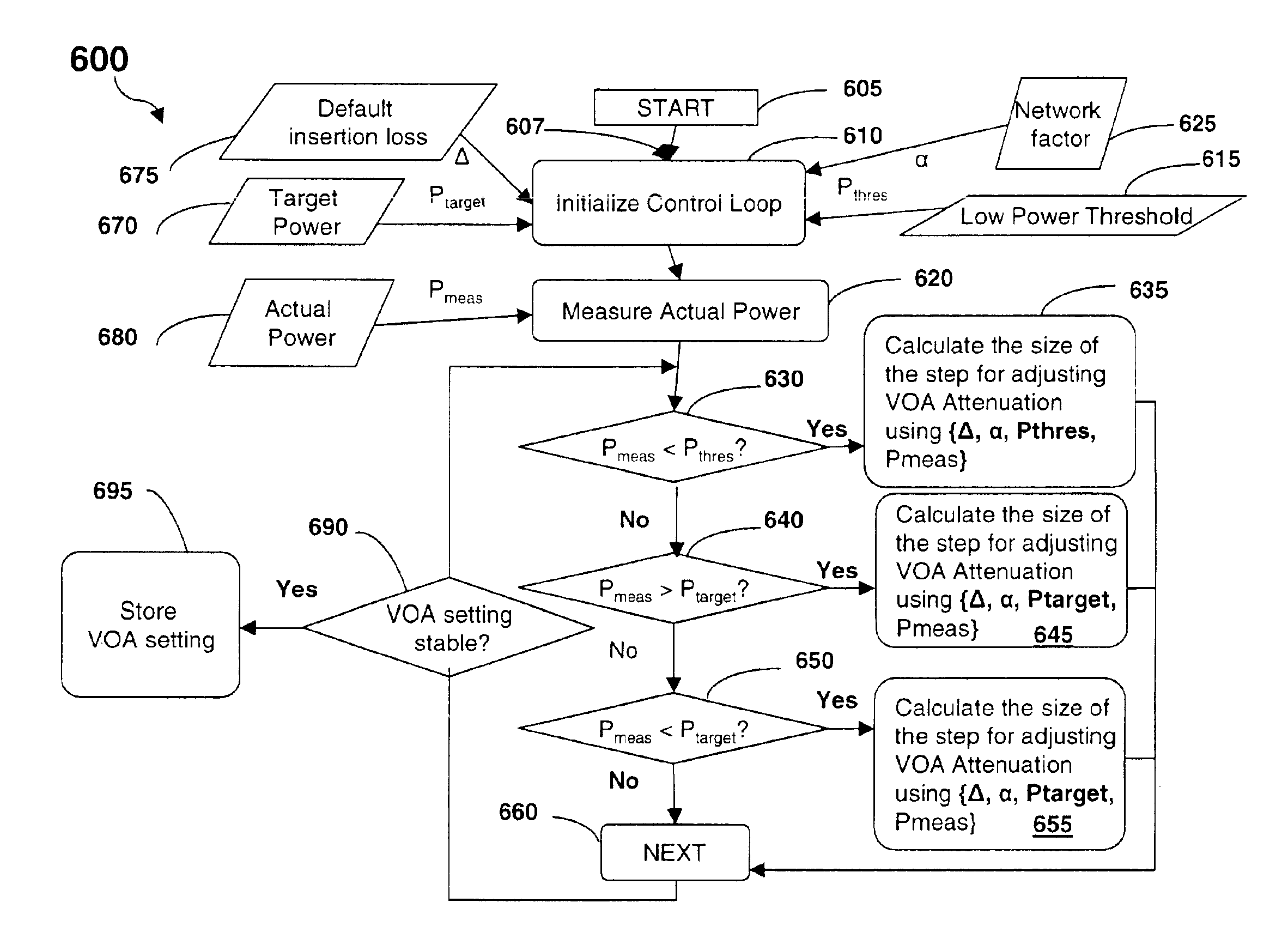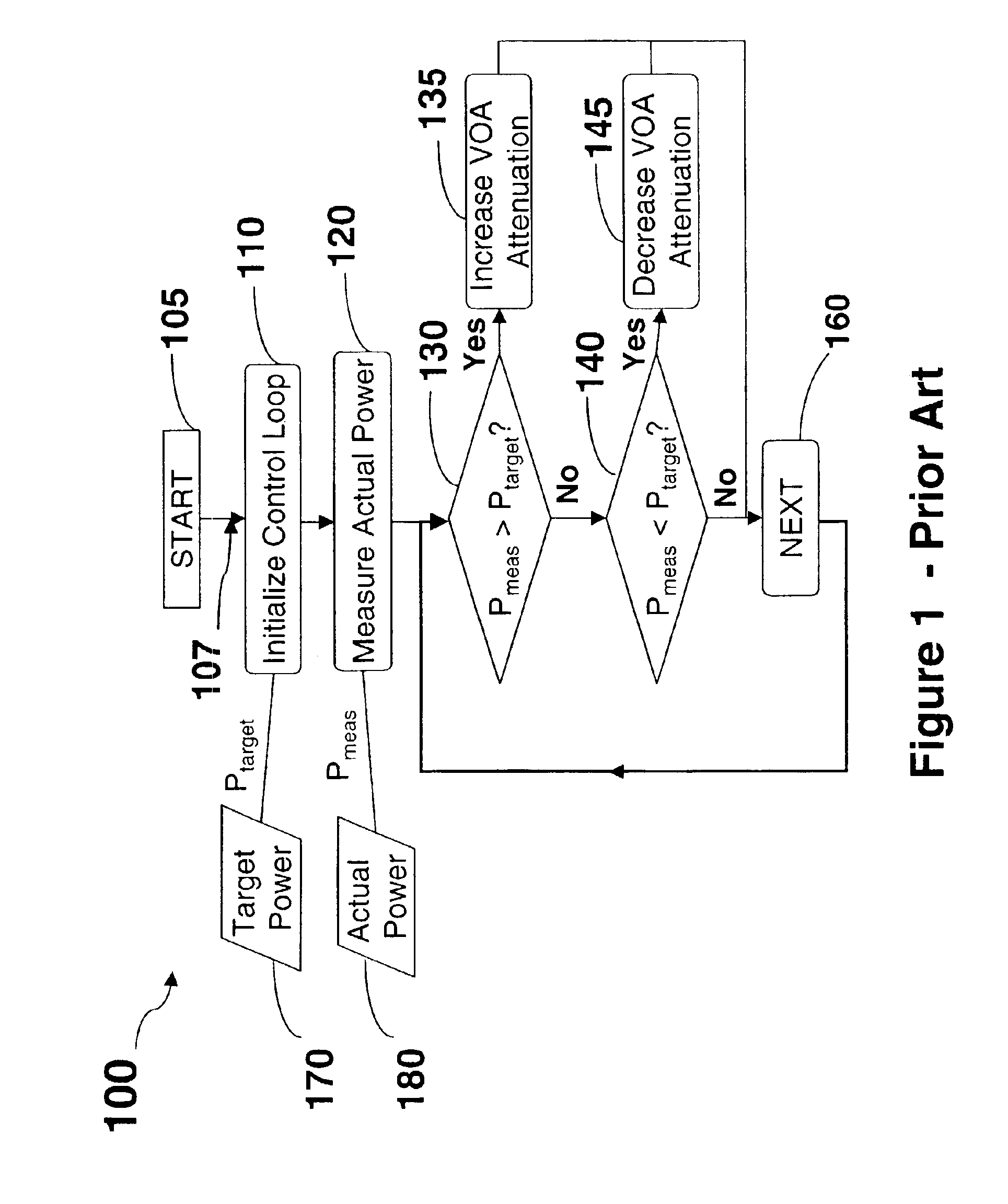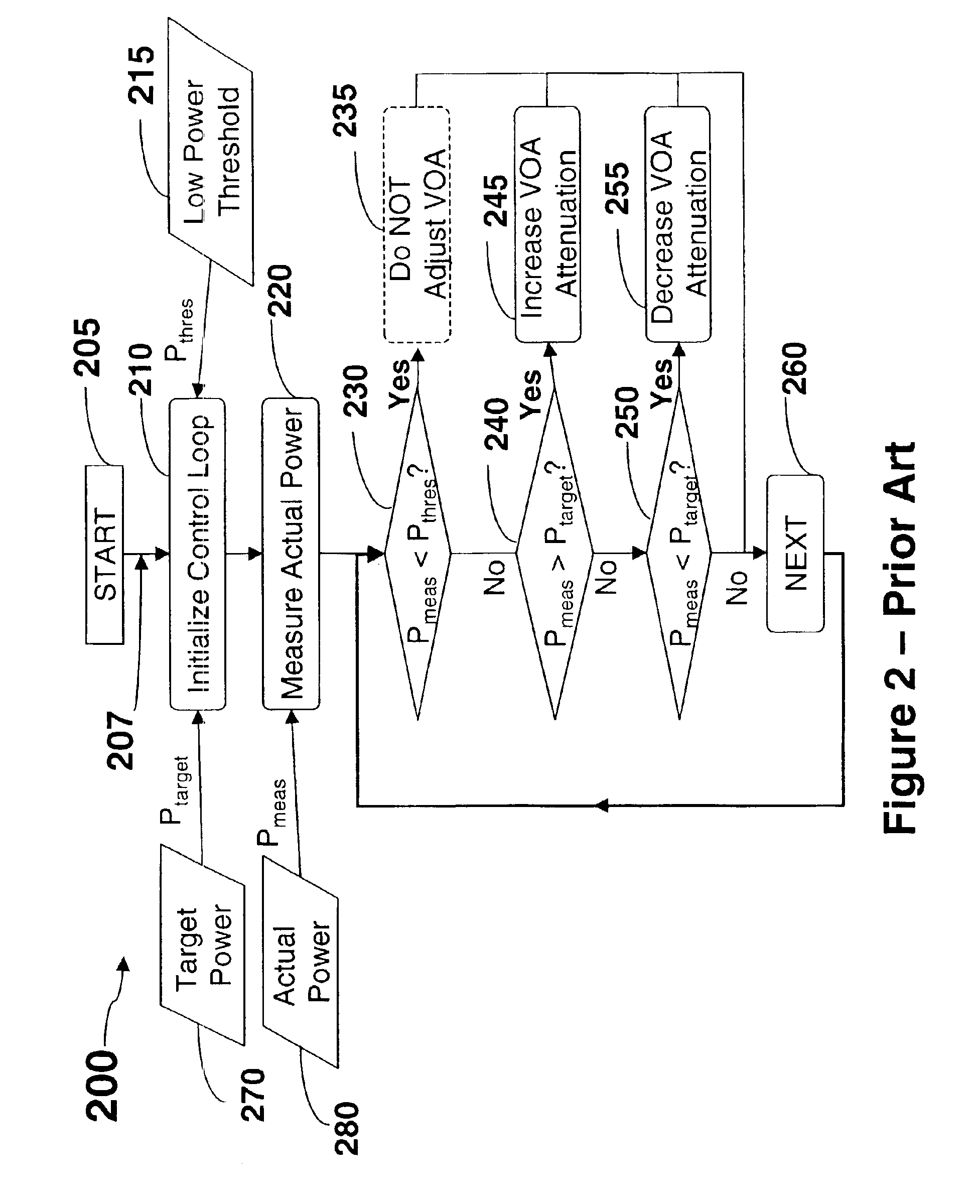Method and apparatus for controlling a variable optical attenuator in an optical network
a variable optical attenuator and optical network technology, applied in the field of optical telecommunications networks, can solve the problems of increasing bit error rate, affecting the accuracy of optical network control, so as to achieve the effect of high attenuation and convenient adjustmen
- Summary
- Abstract
- Description
- Claims
- Application Information
AI Technical Summary
Benefits of technology
Problems solved by technology
Method used
Image
Examples
first embodiment
[0045]Thus, in accordance with the present invention, the dynamic VOA attenuation setting method, incorporated on the smart microcontroller, manages the VOA control loop open and closed operations as follows:[0046]Step 1: initializing the parameters {Δ, α, Ptarget, Pmeas, Pthres}.[0047]Step 2: setting up VOA attenuation to target power {Ptarget} when VOA control loop is in open loop mode:[0048]smart microcontroller updates the VOA attenuation setting,[0049]VOA control loop is closed once the input to the VOA has stabilized, and[0050]VOA setting is adjusted until the target output power is reached.[0051]Step 3: if the measured power {Pmeas} at the output of the VOA {Poutput} is below a LOS power threshold {Pthres}:[0052]smart microcontroller computes the VSI, wherein the VSI is given by the following formula: VSI=Δ +∑i=1n α(i)·[{Pthres}-{Pmeas}]n[0053]controller changes the VOA attenuation by said VSI,[0054]VOA control loop closes and converges on the new optical output power,[00...
second embodiment
[0065]FIG. 7 shows an apparatus 700 for controlling attenuation for a variable optical attenuator (VOA) 710 inserted in an optical path of an optical signal propagating in an optical network according to the invention. In FIG. 7, a tap coupler 720 leads the VOA 710 with a tap monitor 730. The tap coupler 720 is for detecting the power of the optical signal 701 at an input to the VOA 710 and the tap monitor 730 is for measuring the power of the optical signal 701 at an input to the VOA 710. The optical tap coupler 720 is calibrated properly to accurately report the input power 701. As described before, calibration of the tap coupler 720 and tap monitor 730 are done during the manufacturing process. The LOS power threshold {Pthres} and target power {Ptarget} are calibrated during commissioning of the installed system to meet the requirements of the optical network. The tap coupler 720 output is sampled with an analogue-to-digital converter (ADC) 735 and the result is processed by a sm...
third embodiment
[0085]FIG. 8 shows an apparatus 800 for controlling attenuation for a variable optical attenuator (VOA) 810 inserted in an optical path of an optical signal propagating in an optical network according to the invention. In FIG. 8, a tap coupler 820 leads the VOA 810 with a tap monitor 830 for detecting and measuring the power of the optical signal 801 at the input to the VOA 810, respectively. The tap coupler 820 output is sampled with an analogue-to-digital converter (ADC) 835 and the result is processed by a smart microcontroller 840. A tap coupler 860 follows the VOA 810 with a tap monitor 850 for detecting and measuring the power of the optical signal 802 at the output of the VOA 810, respectively. The tap coupler 860 output is sampled with an analogue-to-digital converter (ADC) 855 and the result is processed by a smart microcontroller 840. The attenuation of the VOA 810 is set by the smart microcontroller via a digital-to-analogue converter (DAC) 845. The optical tap coupler 82...
PUM
 Login to View More
Login to View More Abstract
Description
Claims
Application Information
 Login to View More
Login to View More - R&D
- Intellectual Property
- Life Sciences
- Materials
- Tech Scout
- Unparalleled Data Quality
- Higher Quality Content
- 60% Fewer Hallucinations
Browse by: Latest US Patents, China's latest patents, Technical Efficacy Thesaurus, Application Domain, Technology Topic, Popular Technical Reports.
© 2025 PatSnap. All rights reserved.Legal|Privacy policy|Modern Slavery Act Transparency Statement|Sitemap|About US| Contact US: help@patsnap.com



